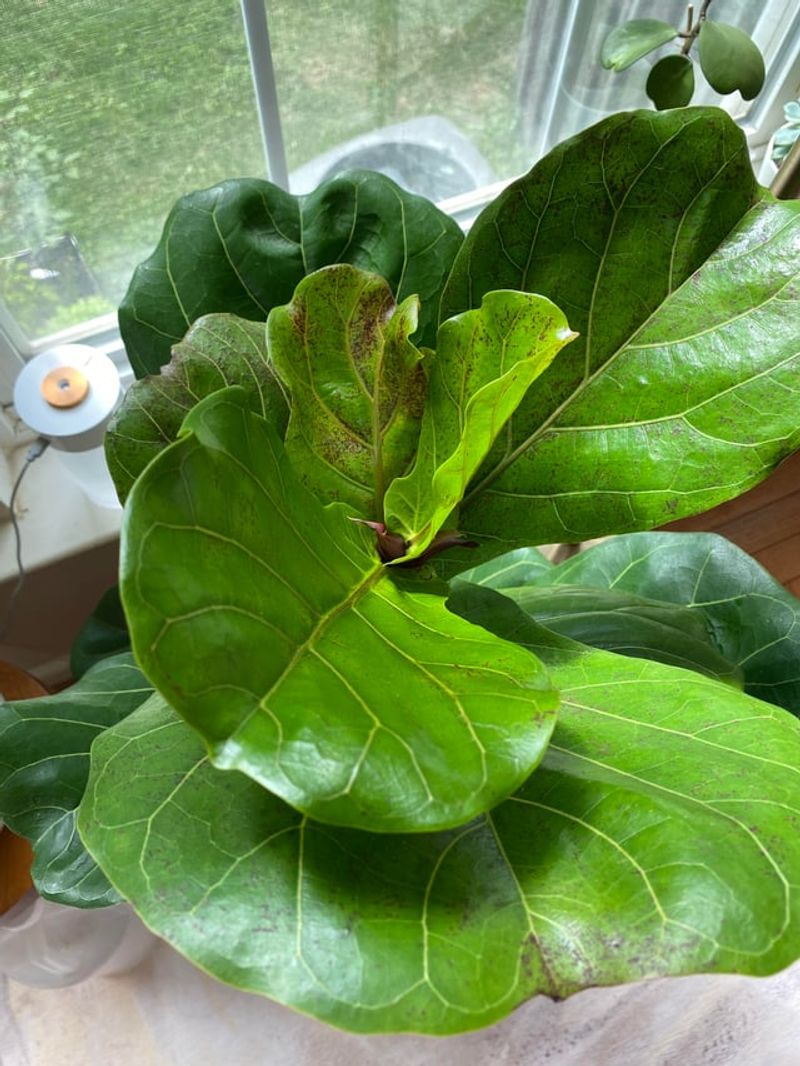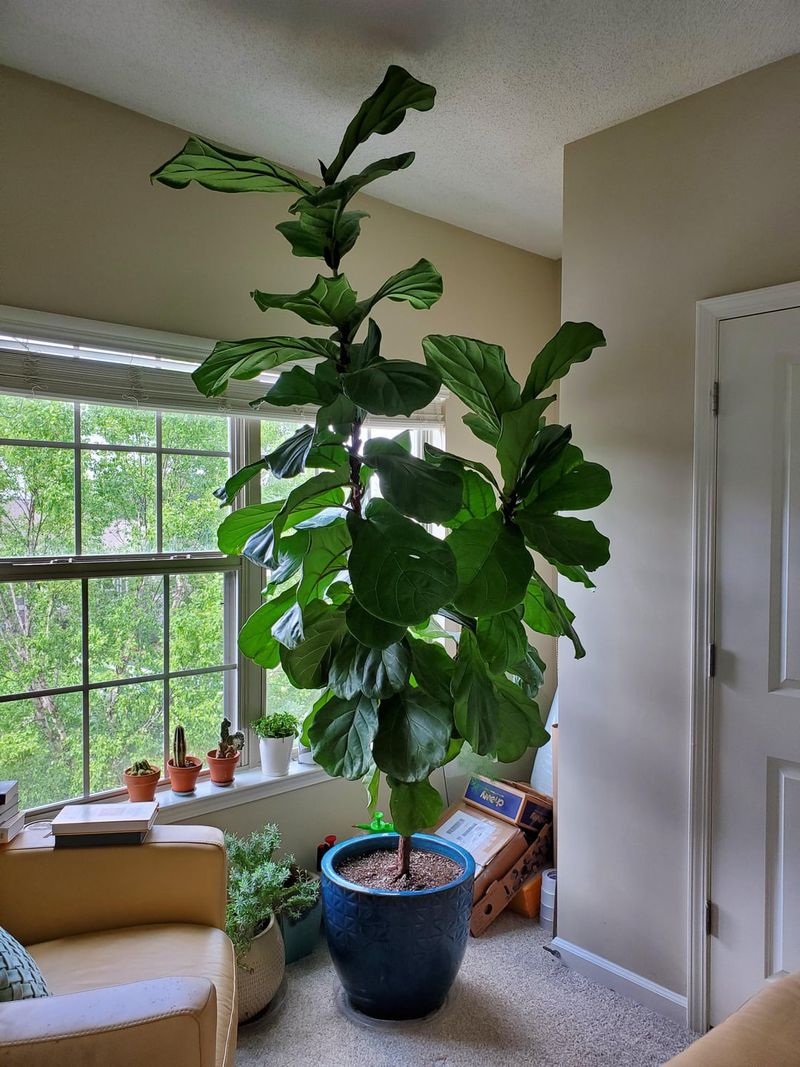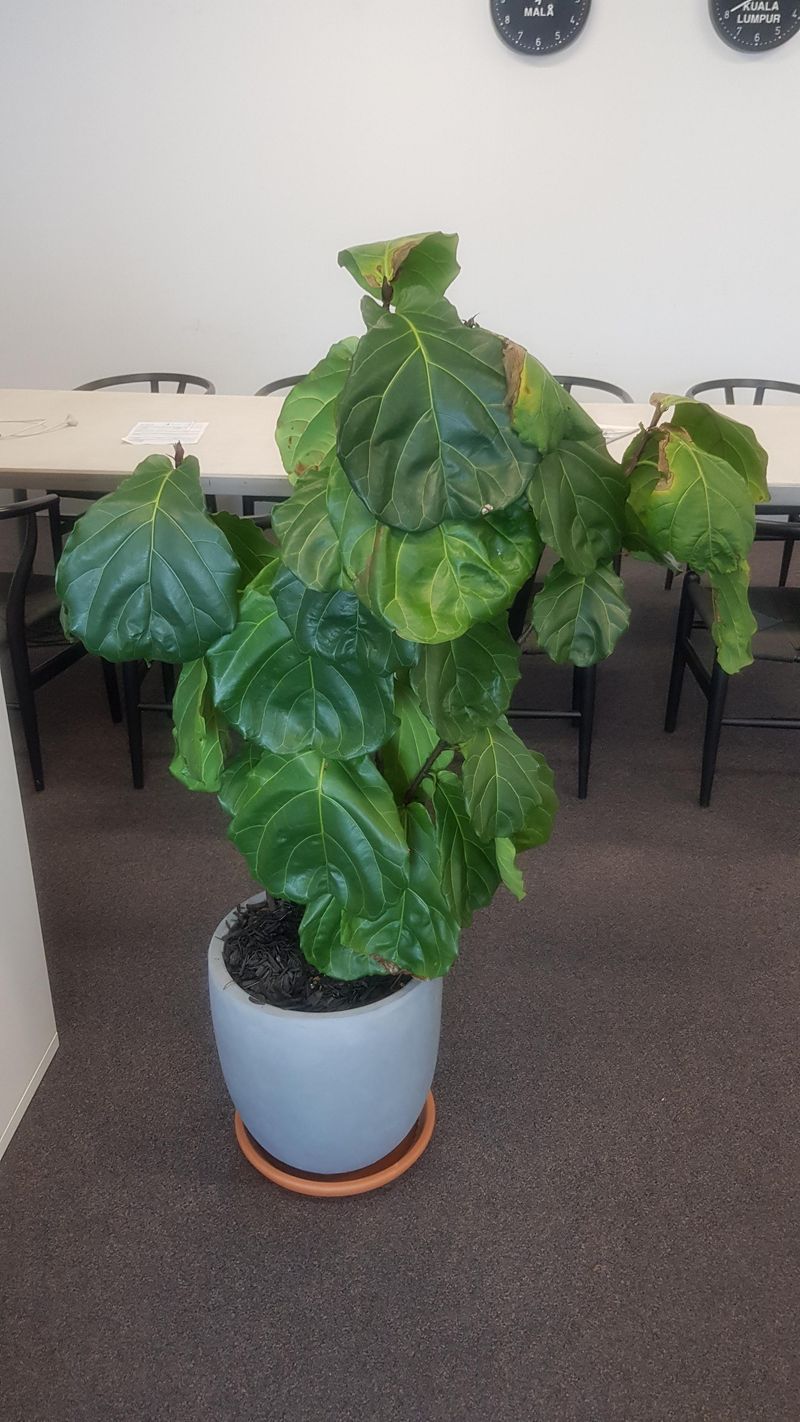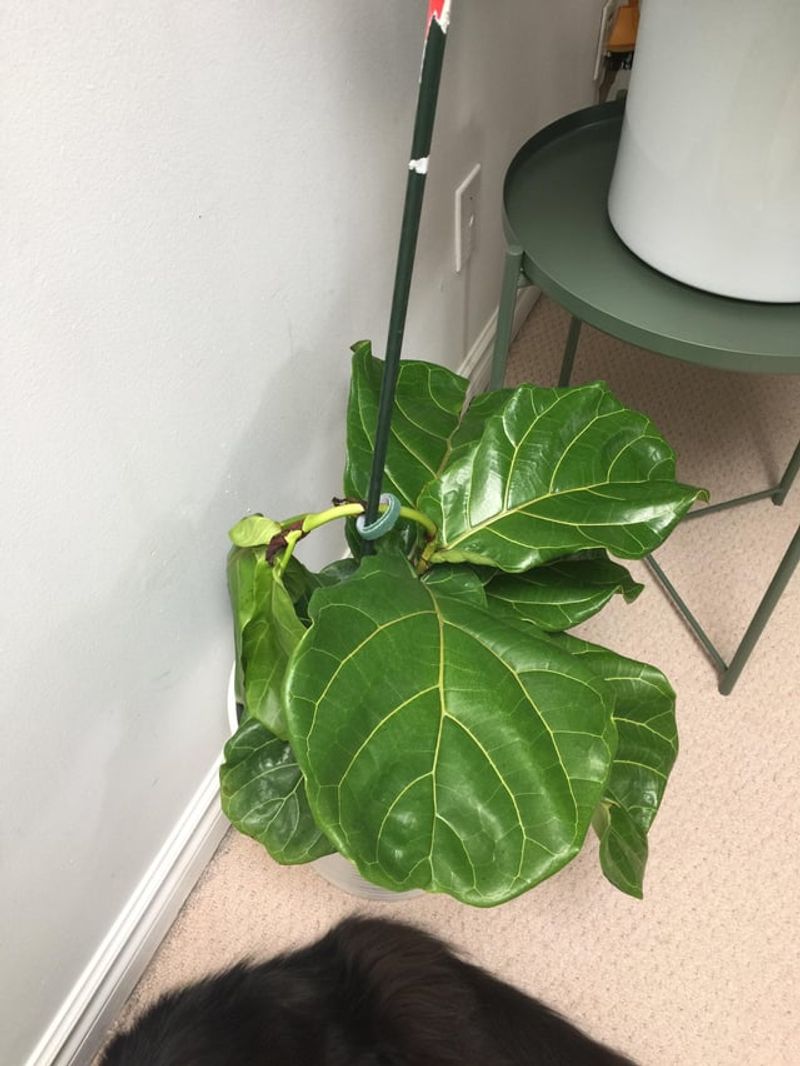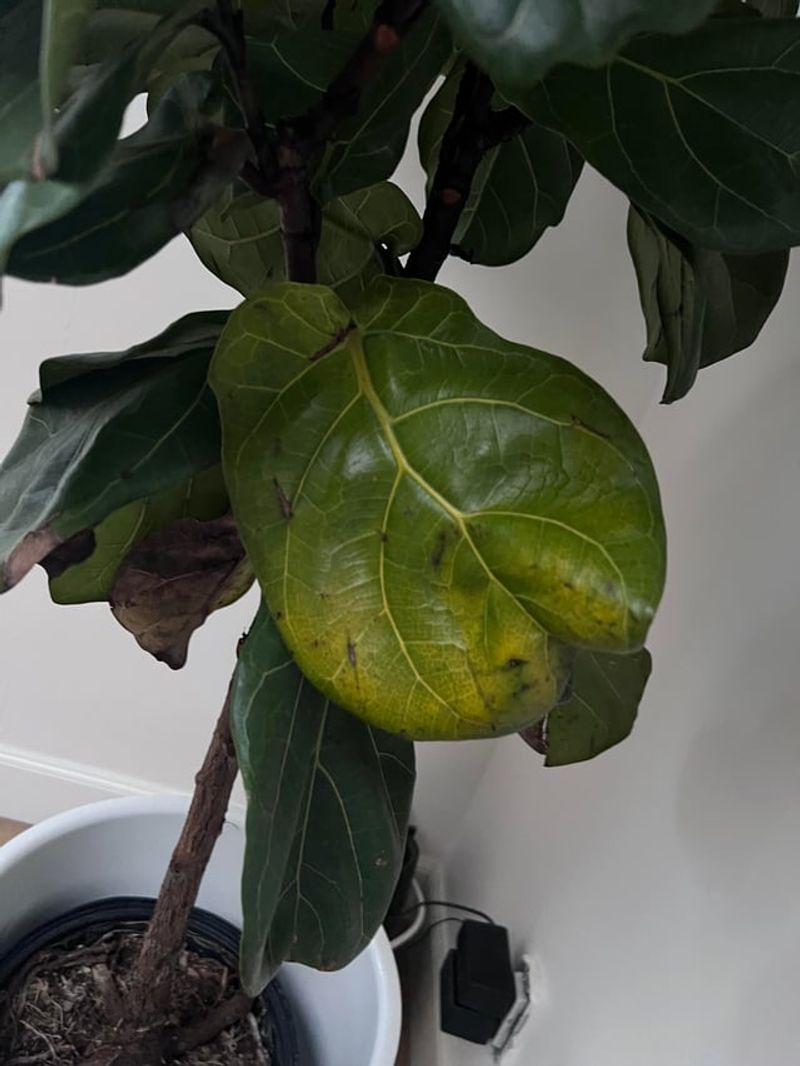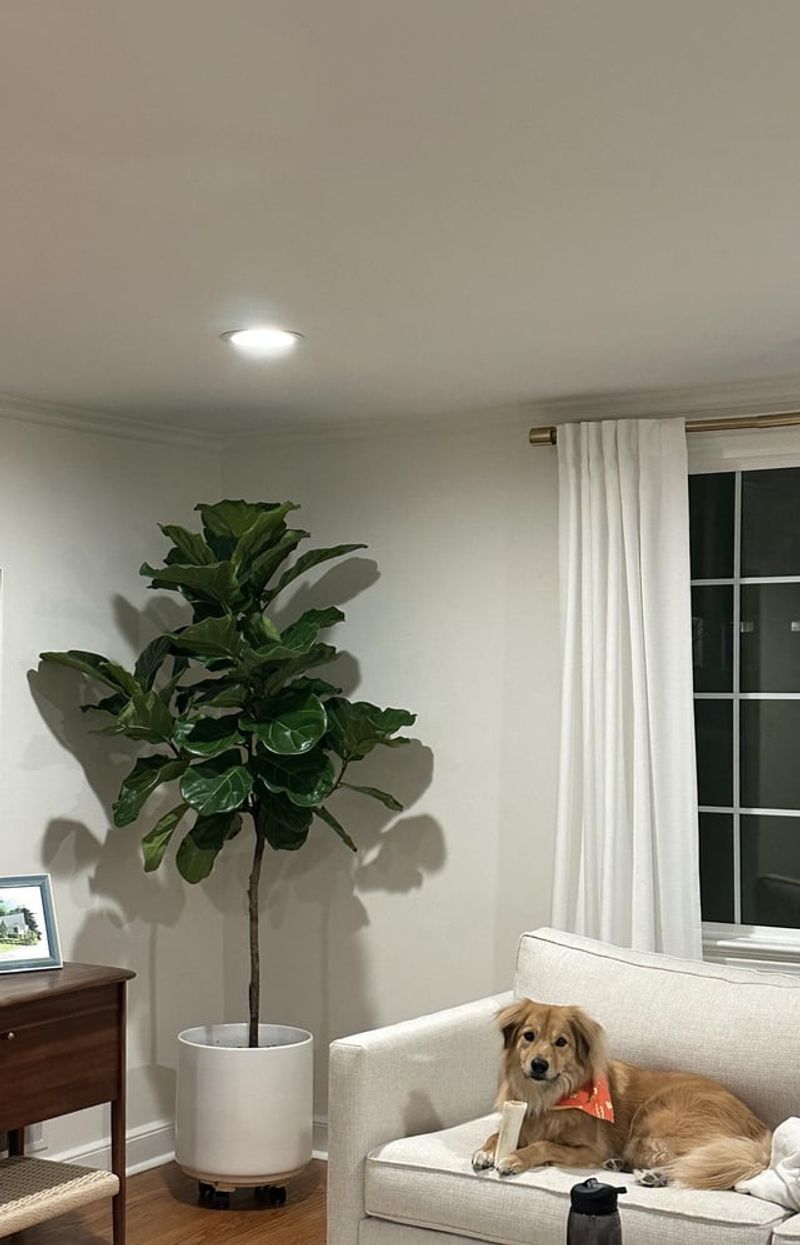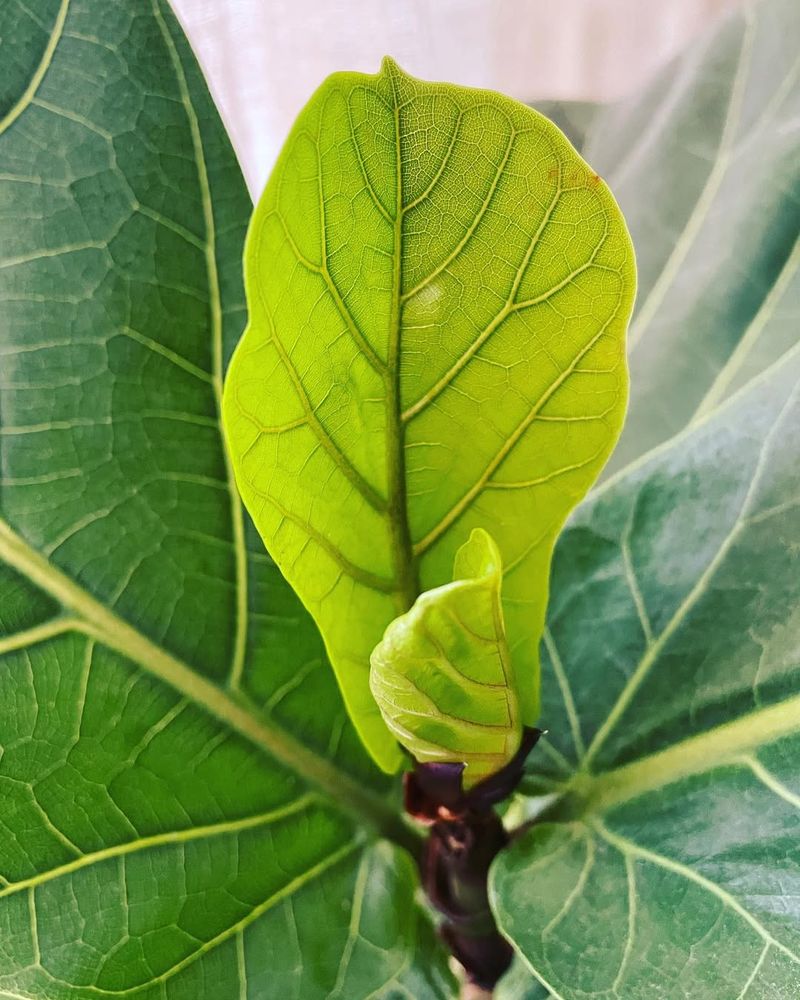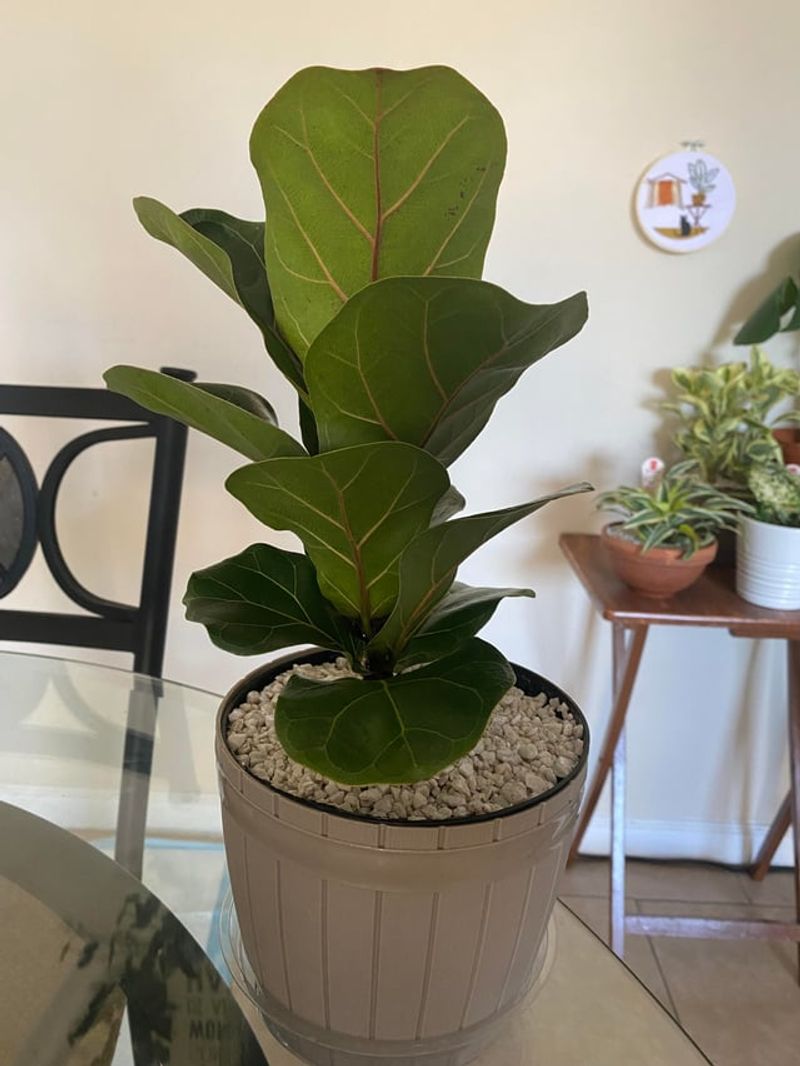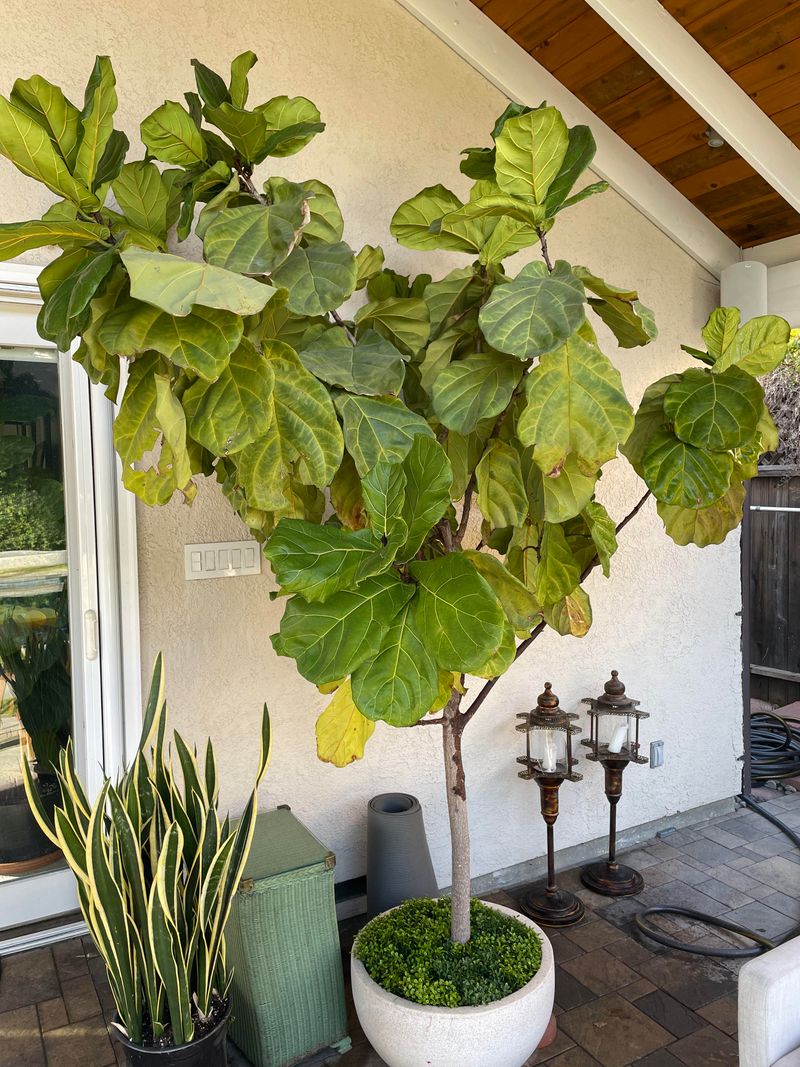Florida homes often have high humidity, which can affect how indoor fiddle leaf figs absorb water. Knowing how to water them correctly is key to keeping them healthy. I’ve learned that letting the soil partially dry out before watering is much more effective than following a strict schedule. Understanding your plant’s needs will help you avoid common mistakes and enjoy a thriving indoor garden.
1. Check Soil Moisture Before Every Watering
Sticking your finger about two inches into the soil tells you exactly what your plant needs. If it feels damp, hold off on watering for a few more days.
In my Florida apartment, I’ve noticed that overwatering tends to cause leaf browning much faster than I expected. The humidity here can be deceiving, making you think the plant needs less water than it actually does.
For me, checking the soil moisture before watering has made a huge difference in keeping the plant healthy. It prevents root rot and ensures you’re not guessing.
2. Watering Frequency Depends On Your Home’s Humidity
Florida’s natural humidity means your indoor plant might need water less often than guides suggest. During summer months, the air stays moist, slowing down how quickly soil dries out.
I water mine every seven to ten days instead of the typical weekly schedule recommended online. Observing how your specific environment affects the plant is more reliable than following generic advice.
Using a moisture meter can help you track patterns over time. This way, you develop a watering routine that matches your home’s unique conditions perfectly.
3. Water Thoroughly Until It Drains Out The Bottom
Giving your plant a deep soak ensures water reaches all the roots evenly. Pour slowly until you see water coming out of the drainage holes at the bottom.
Shallow watering only wets the top layer of soil, leaving roots thirsty and stressed. I used to do quick waterings, but my plant started dropping leaves until I changed my approach.
After watering, empty the saucer underneath so the roots don’t sit in standing water. This simple step prevents fungal problems and keeps roots breathing properly.
4. Avoid Watering On A Strict Schedule
Plants don’t follow calendars, and neither should your watering routine. Seasonal changes, air conditioning use, and even cloudy weeks can alter how quickly soil dries.
During Florida’s rainy season, indoor humidity spikes, and my plant needs water much less frequently. Sticking to a rigid schedule led to soggy soil and yellowing leaves for me.
Instead, I rely on soil checks and visual cues from the plant itself. Flexibility helps you respond to what your plant actually needs rather than what a guide assumes.
5. Watch For Signs Of Overwatering And Underwatering
Brown spots with yellow halos usually mean you’re watering too much. Drooping, crispy leaf edges signal the opposite problem.
Learning to read these signs saved my plant when I first moved to Florida. The high humidity fooled me into thinking less water was always better, but my plant started wilting.
Adjusting quickly when you spot these symptoms prevents long-term damage. Keep an eye on new growth especially, since it shows stress faster than older leaves do.
6. Use Room Temperature Water Only
Cold water can shock the roots and slow down nutrient absorption. Filling your watering can the night before lets water reach room temperature naturally.
I keep a jug on my counter specifically for plant watering. This also allows chlorine to evaporate, which is gentler on sensitive roots.
Warm water isn’t ideal either, as it can encourage bacterial growth in the soil. Sticking with room temperature water keeps your plant comfortable and reduces unnecessary stress on its system.
7. Reduce Watering During Winter Months
Even in Florida, winter brings cooler temperatures and less intense sunlight. Your plant’s growth slows down, meaning it uses less water overall.
I cut back to watering every two weeks during December and January. The soil stays moist longer because the plant isn’t actively growing or transpiring as much.
Overwatering during dormancy is one of the biggest mistakes indoor gardeners make. Paying attention to seasonal shifts helps you adjust care appropriately and prevents root issues.
8. Ensure Your Pot Has Proper Drainage Holes
Without drainage holes, excess water has nowhere to go, leading to root rot fast. Even the most careful watering can’t compensate for a pot that traps moisture.
When I repotted mine into a decorative container without holes, the plant declined within weeks. Now I always use a nursery pot inside decorative covers.
Proper drainage allows roots to breathe and prevents waterlogged soil. If you love a certain pot without holes, drill some yourself or use it as an outer sleeve only.
9. Mist Leaves Sparingly To Boost Humidity
While misting can temporarily increase humidity around your plant, it’s not a replacement for proper watering. The roots need moisture, not just the leaves.
In Florida, our homes already have decent humidity, so I only mist occasionally during dry spells from air conditioning. Too much misting can encourage fungal spots on leaves.
If you do mist, do it in the morning so leaves dry before nighttime. This reduces the chance of disease while still giving your plant a humidity boost.

